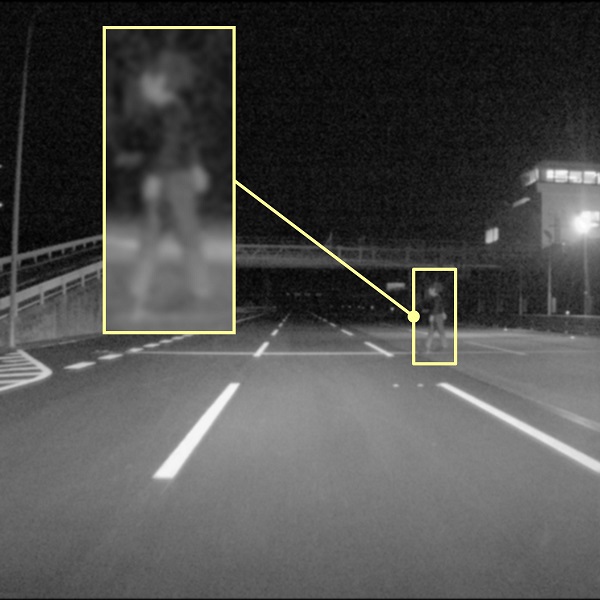DENSO announced that the image sensors provided by Sony Semiconductor Solutions Corporation has helped DENSO improve the performance of its in-vehicle vision sensors* and can now detect pedestrians during night conditions. This improvement helps strengthen DENSO’s suite of Advanced Driver Assistant systems used to help prevent traffic accidents.
Traffic accidents occurring at night often involve pedestrians and can cause severe injury. The New Car Assessment Program (NCAP) followed in Europe and Japan, is considering including night-time pedestrians within the scope of collision avoidance in its safety performance evaluation standards for automatic braking systems. The newly developed vision sensors will help meet this new safety requirement.
 |
 |
|
Vision sensors are used with cameras to detect white lines on roads and objects ahead. On the left is current products and seen right is images using the new DENSO sensors. (All photos courtesy of DENSO) |
|
Sony’s highly sensitive image sensors, which are also used in surveillance and other monitoring devices, enable cameras to take clear images of objects even at night. DENSO has improved the quality of Sony’s image sensors in terms of ease of installation, heat resistance, vibration resistance, etc. to be used in vehicle-mounted vision sensors. DENSO has also used Sony’s image signal processors (ISPs) for noise reduction and optimization of camera exposure parameters to better recognize and take clearer images of pedestrians at night.
Sony holds the largest share of the global image sensor market. Its image sensors are used in a wide variety of products including digital cameras, smartphones, and other home electronics.
DENSO is developing technologies and products to help create a society free from traffic accidents. Based on these, DENSO will continue to contribute to building a safe and secure automotive society for all people around the world, not just for drivers and pedestrians.
* Vision sensors are used with cameras to detect white lines on roads and objects ahead.













